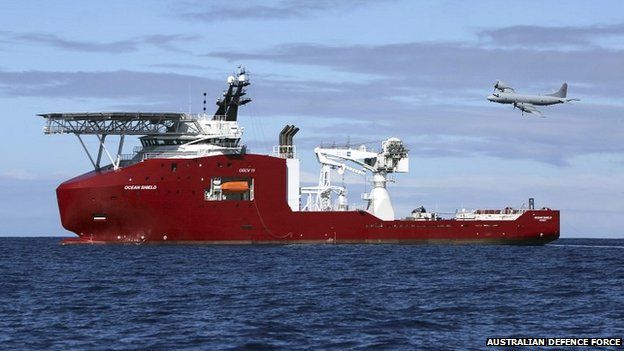MH370 search: Investigators dismiss Australia debris
- Published

Authorities in Australia say material washed ashore is not related to missing Malaysia Airlines flight MH370.
The Australian Transport Safety Bureau (ATSB) examined photographs of debris, which was found by a member of the public near the town of Augusta, some 300km (190 miles) south of Perth.
The material was metallic and about 2.5m (8ft) long, according to reports.
"We're satisfied that it's not a lead in terms of the search for MH370," ATSB chief Martin Dolan told ABC News.
On Wednesday, Mr Dolan told CNN the material was "sufficiently interesting" for the ATSB to take a look, but added: "The more we look at it, the less excited we get."
Most expensive
The images have also been sent to authorities in Malaysia.
Malaysia is running the investigation into the plane's disappearance, but search efforts are being led by Australia's Joint Agency Co-ordination Centre (JACC).
For the past two days, bad weather has prevented planes from taking part in the search about 1,600km (990 miles) north-west of Perth.
PM Tony Abbott says Australia "will not rest" until the search is completed
A US Navy mini-submarine scanning the ocean bed has covered more than 80% of a 310 sq km (120 sq miles) search area in the southern Indian Ocean, without finding any sign of debris in water that is up to 4.5km deep.
Up to 10 military aircraft and 12 ships are currently taking part in the hunt. The daily operation, involving some two dozen nations, is already shaping up to be the most expensive in aviation history.
Australia said on Wednesday that it would not abandon the hunt, insisting that the cost of the operation was not a concern.
Prime Minister Tony Abbott said if the current underwater search was unsuccessful, a new strategy would begin.
Defence Minister David Johnston has said that sophisticated sonar equipment will probably be used in the next stage.
"The next phase, I think, is that we step up with potentially a more powerful, more capable side-scan sonar to do deeper water," Mr Johnston said.
Mr Abbott said the probable impact zone of the airliner was in an area of the sea floor 700km (430 miles) long and 80km (50 miles) wide.
In a separate development, Malaysian Transport Minister Hishammuddin Hussein said that his country's cabinet had approved the formation of an international investigation team to "determine the actual cause of the accident so similar accidents could be avoided in the future".
Australia says that it is now consulting with Malaysia, China and the United States on the next phase of the search, which is likely to be announced next week.
Mr Abbott said a new search strategy would be put into action if nothing was found in the current seabed search.
"If at the end of that period we find nothing, we are not going to abandon the search, we may well rethink the search, but we will not rest until we have done everything we can to solve this mystery," he said.
"The only way we can get to the bottom of this is to keep searching the probable impact zone until we find something or until we have searched it as thoroughly as human ingenuity allows at this time," the Australian prime minister said.